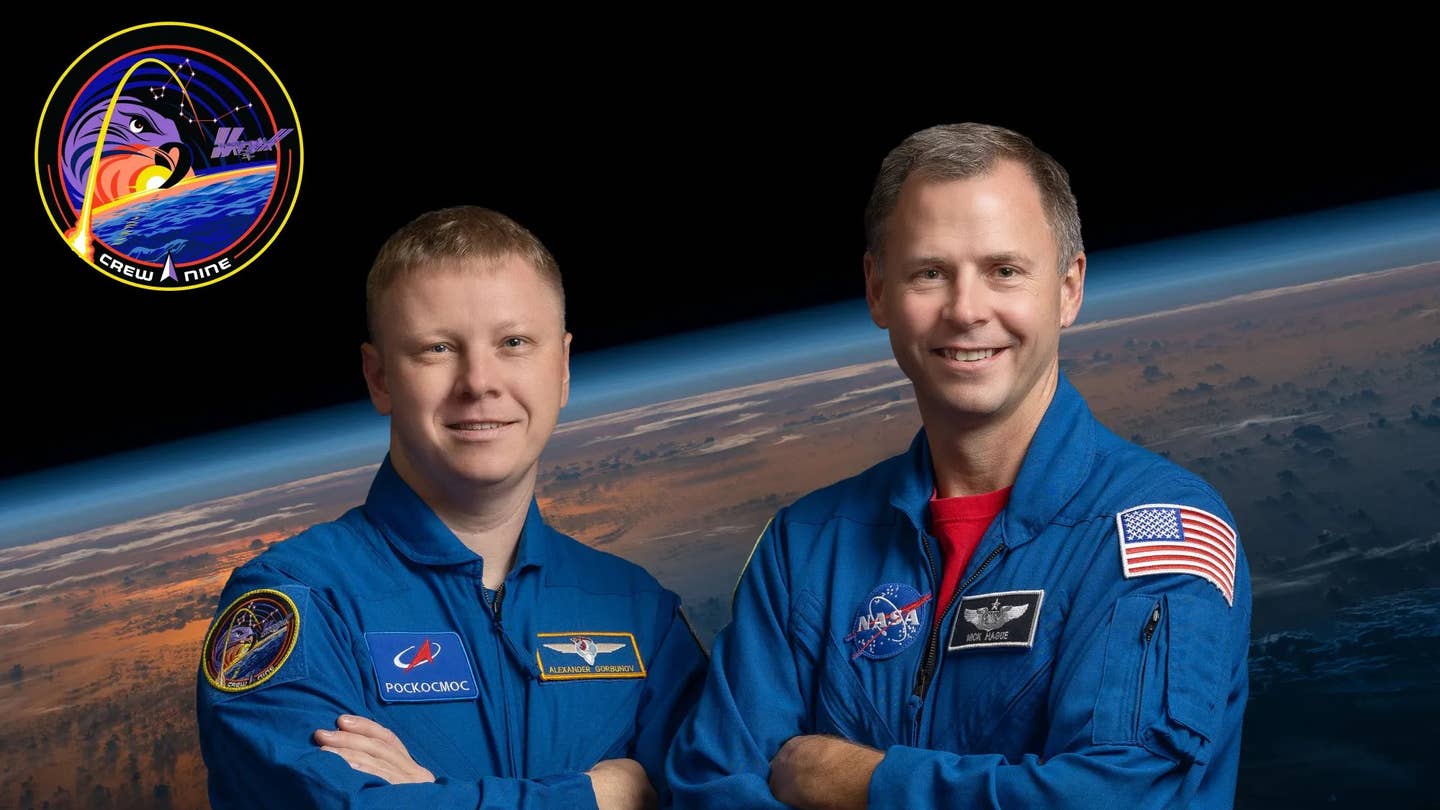What to Watch: SpaceX Crew-9 Scheduled for Saturday Launch
Spaceflight will be the ninth Commercial Crew astronaut rotation mission SpaceX has performed for NASA.

NASA astronaut Nick Hague (right) and Roscosmos cosmonaut Aleksandr Gorbunov will fly to the International Space Station on NASA’s SpaceX Crew-9 mission. [Courtesy: NASA]
SpaceX’s Falcon 9 rocket and Crew Dragon capsule are stacked at Space Launch Complex-40 at Cape Canaveral Space Force Station in Florida ahead of the company’s latest human spaceflight, targeted to launch no earlier than 1:17 p.m. EDT on Saturday
The firm is preparing for the Crew-9 astronaut rotation mission to the International Space Station (ISS), which will culminate in the long-awaited return of astronauts Butch Wilmore and Suni Williams in February. Wilmore and Williams hitched a ride to the ISS on Boeing’s Starliner in June and have remained there as engineers contended with several issues on the spacecraft.
Crew-9 will be the first human spaceflight to launch from Space Launch Complex-40. Initially scheduled to fly in August, the mission was pushed back to give NASA and Boeing more time to analyze and eventually undock Starliner, freeing up space for Dragon to dock.
The flight is NASA’s ninth Commercial Crew mission with SpaceX, the agency’s sole active contractor for that program. Boeing, the other contract recipient, is still developing Starliner but hopes to fly an inaugural astronaut rotation mission late next year. The program seeks to maintain a continuous human presence on the ISS, which in 2025 will enter its 24th consecutive year of occupation.
Crew-9 was originally slated to be a four-person mission. But only NASA astronaut Nick Hague and Roscosmos cosmonaut Aleksandr Gorbunov will fly up to the space station, meaning Dragon will launch with a pair of empty seats. NASA astronauts Zena Cardman and Stephanie Wilson were taken off the flight to make way for Williams and Wilmore but are eligible for reassignment.
Hague was chosen due to his experience. Gorbunov, who has never flown to space, remains on the manifest because NASA is required to send a Roscosmos cosmonaut on the mission.
After liftoff, Dragon will accelerate to 17,500 mph before docking autonomously with the space station. Upon arrival, they will join the crew of ISS Expedition 72, which includes Wilmore, Williams, NASA astronaut Don Pettit, and Roscosmos cosmonauts Alexey Ovchinin and Ivan Vagner.
Over the course of about five months, the crew will perform station maintenance via spacewalk and conduct more than 200 scientific research experiments, intended to prepare humans for exploration beyond low-Earth orbit as well as solve problems back on Earth. Among other things, they will study the physics of supernova explosions, the behavior of cells and platelets during long-duration spaceflight, and methods to reduce changes to astronaut brain and ocular structure due to low gravity.
NASA will provide live streaming coverage of the Crew-9 prelaunch, launch, postlaunch, and docking on NASA+ and the agency’s website, starting Friday afternoon. It will also maintain a live video feed of the launchpad in the hours leading up to liftoff and provide blog updates. Spaceflight enthusiasts can register to attend the launch virtually.
Like this story? We think you'll also like the Future of FLYING newsletter sent every Thursday afternoon. Sign up now.

Sign-up for newsletters & special offers!
Get the latest FLYING stories & special offers delivered directly to your inbox






